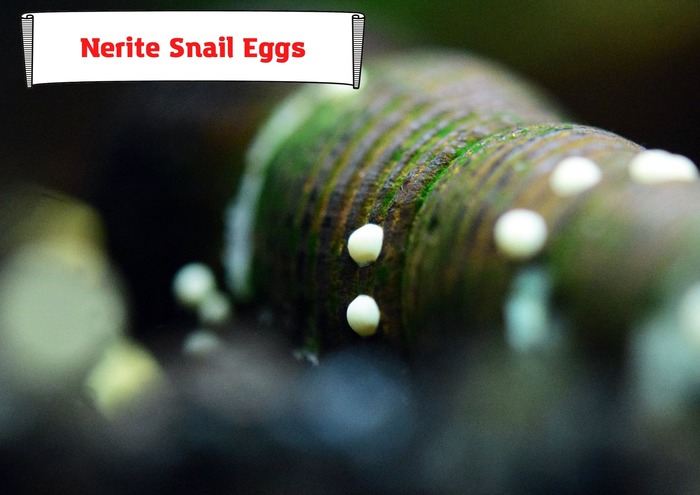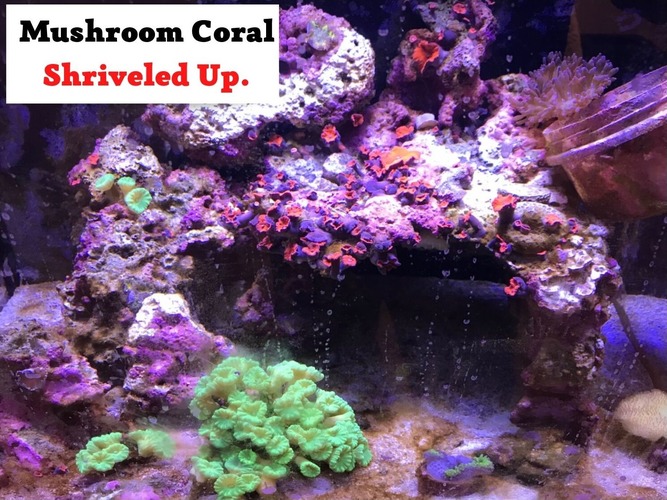
It’s easy to care for Nerite snails since they’re quiet, adorable, and calm creatures. Unique designs and hues, as well as functional advantages, have made these snails highly popular. In addition to cleaning glass, plants, and decorations of algae, they consume hair algae and maintain a clean, uniform hue on your substrate with tireless efforts. Nerite snails are considered the best freshwater cleaning teams instead of the more typical Plecostomus and Corydoras catfish.
Indeed, Nerite snails are usually regarded as the finest snail species for removing algae from glass, rocks, live plants, and driftwood in the aquarium hobby. You won’t have to clean your tank often if you have a Nerite snail in there since algae won’t grow. Although they can survive in freshwater and saltwater, they must reproduce in saltwater. It is almost impossible to overpopulate any freshwater aquarium with them. Because Nerite Snails are so gentle, you may keep them alongside your fish, shrimp, plants, or other snails without fear.
Snails are slow-moving yet gentle critters that shouldn’t bother your other fish. People keep these snails in their tanks because they are excellent algae eaters. This helps keep tanks clean if not overstocked.
Let’s have a look at the content of this article:
- Information about Nerite Snails
- Nerite Snail eggs and hatching
- Things you must know
Basic information about Nerite Snails
Nerite Snails tend to prefer water temperatures between 72 and 78 degrees Fahrenheit. Some hobbyists claim Nerites can withstand a greater temperature range.
Nerites also require an alkaline pH of 7.5 and aquarium water that is hard with average circulation. These snail species have prominent stripes or barred patterns on their shells, thus their names. Size, color, and pattern vary amongst Nerite snail species. They are prey to giant aggressive fish; therefore, don’t put them in a tank with them. Copper and other drugs must also be avoided since they might be lethal to snails. Finally, Nerite Snails may need Calcium supplements to maintain a healthy shell.
Nerite Snail Eggs

Keeping the Nerite snails in your freshwater fish tank is beneficial as they are efficient cleaning workers of your tank, but it might be your nightmare to see the tiny white dots covering the whole fish tank all of a sudden.
If you think that your Nerite snails will keep multiplying in your freshwater tank and the aesthetics of your aquarium will destroy, take a break and think again.
Nerite snails are adaptable since they can survive and reproduce in salty and fresh water. However, the snail’s typical reproductive cycle does not allow its eggs to hatch in freshwater. The larval stage of Nerite development takes place in brackish water. Even if the eggs hatch in freshwater, the larvae will perish.
Do you want to hatch Nerite Snail eggs?
Breeding Nerite snails is easy, but you need to make extra efforts to hatch their eggs. Even in freshwater, they can mate. Unlike most snails, Nerites reproduce sexually. Males must fertilize females’ eggs, and a female lays around 20 to 25 eggs. Nerite snails may deposit eggs in freshwater, but they don’t hatch, only polluting your fish tank.
If your tank is full of Nerite snails, you may expect them to spend most of their time foraging for algae. To avoid having to worry about a Nerite snail reproducing in your tank, you need to buy one.
Hatching Nerite snail eggs is difficult and often fails, but it may be done if the procedure is followed correctly. You must maintain some rules and regulations to successfully hatched Nerite snail eggs.
Prepare tank for Nerite snail eggs hatching
You need a brackish water tank (5-10 ppt) for them to hatch. It is advised to always prefer a small tank size (20 liters) for a hatchling process. These brackish tanks may be set up and cycled with an SG range between 0.1005 and 0.10010. At least one male and one female snail are likely to be present in a tank with six snails.
The species prefers abrasive, so you must set the tank’s pH between 7 and 8 to make it more basic. Acidity in the tank may disintegrate snail shells. The tolerance of snails towards the temperature range is simply outstanding, and they can easily tolerate a wide range of temperatures. So don’t worry. They grow quicker in warmer temperatures.
Before the eggs hatch, your aquarium must support algae development. To initiate algae development in the tank, give it at least 24 hours of light. Like adult Nerite snails, hatchlings consume algae. They like golden pearls and phytoplankton.
Get the Nerite Snail eggs
The Nerite Snail will mate if they remain together. The female then lays eggs on plants, rocks, and driftwood. The eggs resemble capsules and are white. It’s hard to see because snails hide.
To hatch Nerite snail eggs, put two-parent snails in a brackish water tank and let them mate. Some freshwater snails hatch, but they are feeble and die shortly after. It takes 25 to 30 days from egg-laying to larval hatching. You may transfer Nerite snail eggs from the freshwater tank also. Nerite snails lay 36-106 egg capsules. A snail shell, plant, or ornament may hold the egg capsule. Remove the associated item to relocate the eggs. After roughly a week, snails begin to arrive.
Look after the hatched eggs
Because the adults will eat the eggs once the female releases them, you will need to place them in a brackish tank or partition them from the parents to hatch. Feed the babies every 2-3 hours if the tank is free of algae. Nerite larvae may be fed spirulina powder or phytoplankton.
Let them grow
The larvae swim about independently, starting from the moment the eggs hatch. Because of this, sponge filters in the tank or pre-filters are necessary. They begin to resemble snails as they get older and acquire shells.
You may begin acclimating the young snails to the community tank’s salinity. Within 30 days, these eggs will convert into grown-up larvae, and then it is time to transfer them into your freshwater tank.
Things you must not forget!

- Saltwater is the only place where snails can breed. Put Nerite snails in a saltwater aquarium or release them in salty water to reproduce them effectively.
- Place a bunch of Nerite snails in a saltwater tank or aquarium. Take at least 5-6 groups of snails for higher chances of success. Having different groups increases your chances of successfully reproducing because you can’t tell whether a Nerite snail is male or female.
- Calcium plays a vital role in strengthening a young’s shell. Give them loads of food since the more food they get, the more likely they will reproduce. Surplus reef mix or another calcium-rich substrate should be used in the reproduction storage tank.
- If your snail found a mate and they mated, the female snail will hunt for leaves or driftwood to deposit her eggs, even on another snail’s shell. The egg capsules are yellow and darken as the newborn snail grows.
- A snail egg capsule is oval and may develop up to 1.5mm in length. After 96 hours or three days at least, the egg capsule hatches. After seven days, it becomes a Nerite snail larvae (baby snail). Baby snails are tiny and may be sucked up by filters, so be cautious if you have one. Using a sponge filter eliminates this issue.
- Place your newborn snails in a marine aquarium for optimal safety. The aquarium should include algae or a supply of algae for the newborn snails.
- Leave them in the marine tank for a month before introducing them to your freshwater aquarium. They should achieve full size after a year or two if they are fed well.
Conclusion
Some people think Nerite snails are challenging to procreate, while others indicate that they proliferate like rabbits. The reality likely relies upon the fish tank where they are kept and also the particular types preserved. They exclusively reproduce in brackish water (1.005-1.010 salinity); they are never bred in freshwater and simply reproduce in saltwater.
- Pleco Not Eating. Main Reasons Your Pleco Is Starving - February 21, 2022
- Foxface Fish Sting: Any Danger? And What To Do To Relieve Pain? - February 20, 2022
- White Stuff Coming Out Of Snail – Dangerous? Should You Worry About It? - February 19, 2022




